Estimated reading time: 12 minutes
It’s the sort of question that reliably sets my heart aflutter. Were you fighting in World War 2 and had access to any weapon in anyone’s inventory, what would you choose? That’s the kind of imponderable that will keep a gun geek like me blissfully occupied for hours.
I wore the uniform, but I was a helicopter pilot. I’ve never kicked in doors for real, nor have I ever responded to a live ambush, been subject to a murderous artillery barrage, or had to cross a danger area under fire. As such, discussing such stuff as my favorite small arms remains pleasantly hypothetical. Had I been humping this stuff for real and facing the prospect of imminent violent gory death it might not seem such a pleasant discourse.
Table of contents

Firearm Possibilities

The Thompson submachine guns were way too heavy. The BAR seemed like it was scaled for Goliath the Philistine giant. The M3 Grease Gun was effective, rugged, and fairly compact, but it was still undeniably ungainly. The M1 Garand was a great choice so long as somebody else was humping it.

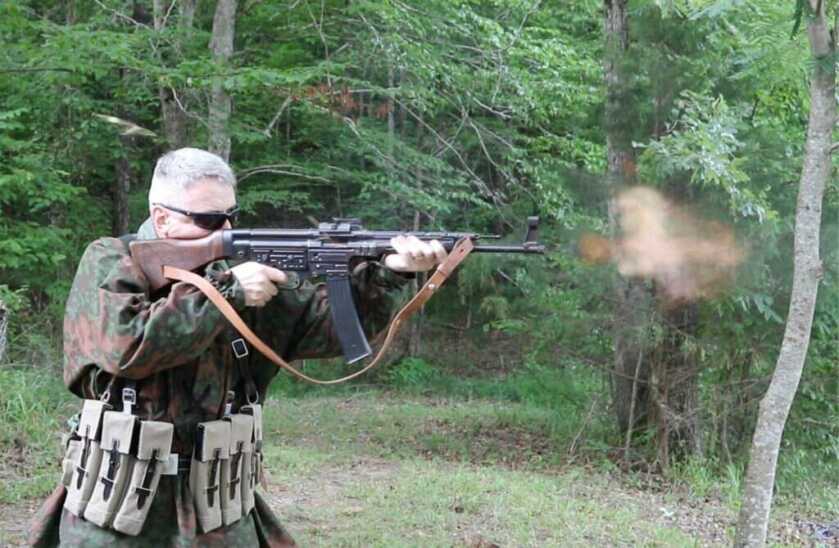

The MP40 is arguably the smoothest-shooting automatic weapon I have ever fired, but it weighs nearly nine pounds, is front-heavy, and is fairly awkward in action. The MP44 was likely the most advanced infantry weapon of the war, but it weighed 11.4 pounds loaded. The FG42 certainly had much to commend it, but it was a complicated beast that fired a massive full-sized 7.92x57mm round. Packing a basic load of ammo any distance would have been a gut check.
My Personal Choice
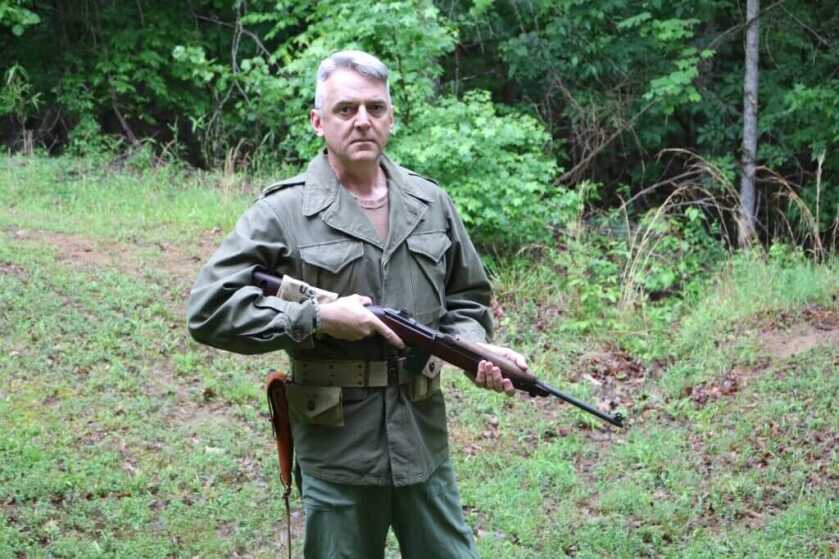
There yet remains the Sten, the PPSh, the Beretta 38A, and half a dozen fine bolt-action rifles. With the entire world as my oyster, however, I think I would likely pick the humble M1 carbine myself. At 5.2 pounds the lithe little carbine is easy to pack, and the fifteen-round box magazine was more generous than most. Additionally, the trim little rifle maneuvers well in confined spaces and stays scary out to a couple of hundred meters.
While all that is interesting, selecting the optimal WW2-vintage personal weapon is not the objective today. Our goal is to review the exploits of one of the manliest warriors who ever lived. As a British commando, Jack Churchill was indeed afforded some latitude in selecting his got-to-war weapons. With a generous arsenal from which to choose, Jack Churchill opted for an English longbow and a Scottish broadsword. Additionally, where normal people might wield such stuff for show, Jack Churchill did not. He used these antiquated weapons to get absolutely medieval on the Germans.
The Jack Churchill Origin Story

To quote Wikipedia, “John Malcolm Thorpe Fleming Churchill was born in Colombo, British Ceylon, to Alec Fleming Churchill (1876–1961), later of Hove, East Essex, and Elinor Elizabeth, daughter of John Alexander Bond Bell, of Kelnahard, County Cavan, Ireland, and of Dimbula, Ceylon.” That’s a mouthful in any of the world’s recognized languages. The young Churchill also lived in Hong Kong and on the Isle of Man before attending the Royal Military College at Sandhurst. Upon graduation and commissioning, Churchill struck out for Burma with the Manchester Regiment. While there he entertained himself riding a motorbike through the rugged Burmese jungles.
Without a proper war to fight, in 1936, Churchill left the military and worked for a time as a newspaper editor in Nairobi, Kenya. He also made a little money as a male model. Throughout it all, Churchill found time to master the bagpipes and become a phenom with a bow and arrow, representing the UK at the World Archery Competitions in 1939. A naturally handsome lad, Churchill even had a small role in the 1924 film The Thief of Baghdad.
The Wild Man Goes to War

As soon as Germany invaded Poland in 1939, Churchill dusted off his uniform and set to it. While serving in France with the British Expeditionary Force, he was known to initiate ambushes against German troops by raising his broadsword above his head and letting out a war cry. He would also play the bagpipes to inspire his troops. Churchill was rumored to have killed a German soldier covertly with his longbow during an exchange near Richebourg, Pas-de-Calais. After having narrowly escaped via the Dunkirk evacuation, Jack Churchill volunteered for the Commandos. It was here he adopted the informal moniker “Mad Jack.”
On our side of the pond, to be mad connotes anger. To the British, mad just means crazy. Mad Jack Churchill certainly earned that appellation.
Jack Churchill, The British Berserker
On 27 December 1941, Churchill charged off of a landing craft leading members of No.2 Commando on a raid against the German garrison at Vågsøy, Norway, while playing, “March of the Cameron Men” on his bagpipes. Once he hit the beach he paused long enough to prime and throw a Mills bomb before resuming his pipes and leading his men inland. Soon thereafter, he was awarded the Military Cross, Britain’s third-highest award for bravery.
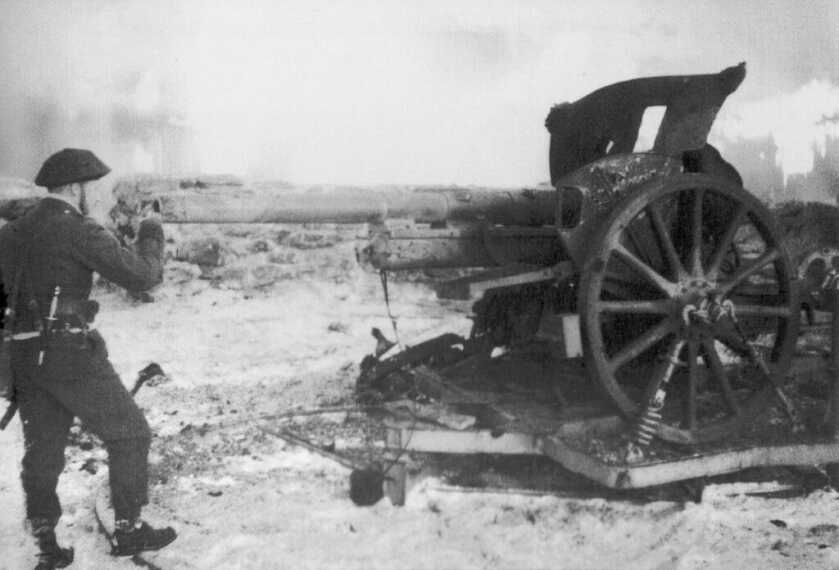
Churchill fought with the Commandos in places like Catania and Salerno, always equipped with his Scottish broadsword and longbow. Accompanied by a single corporal, Churchill pushed inland from the Salerno beachhead into a nearby town where the two men captured 42 German prisoners to include a mortar team. During the frenetic close quarters combat, the lunatic Limey lost his sword. When he later returned alone to retrieve it, Churchill encountered a disoriented American patrol and directed them to safety.
Always Make Sure Somebody Reliable Has Your Back
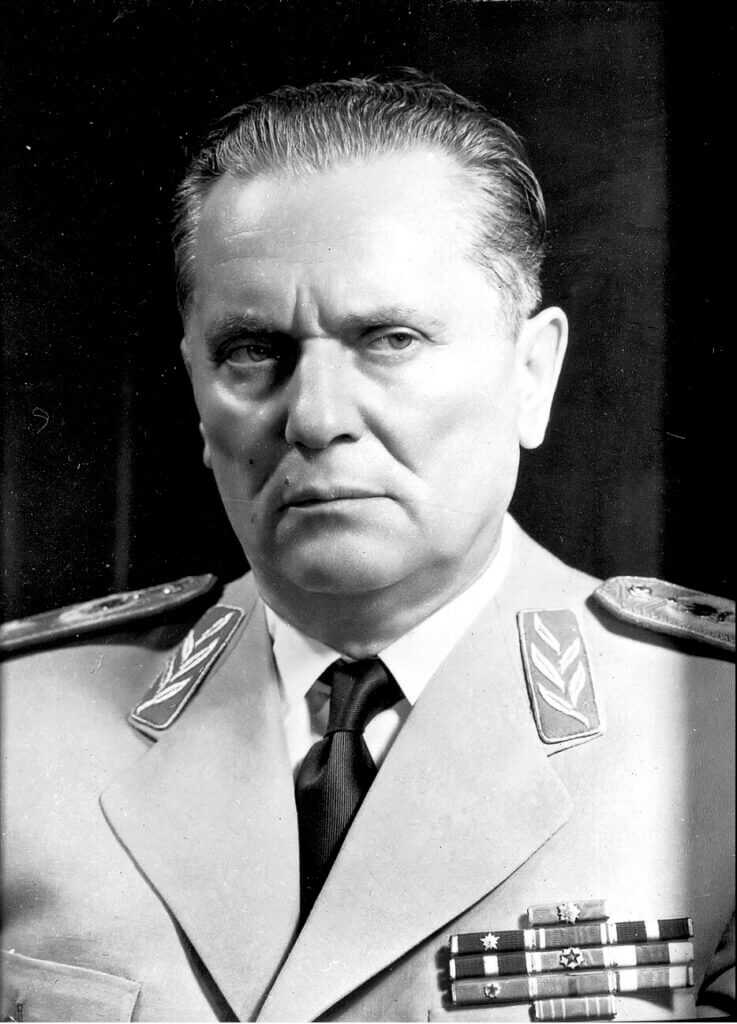
In 1944, Churchill deployed to Yugoslavia in support of Tito and his partisans. While leading a motley band of some 1,500 sort-of dedicated partisan fighters, Churchill and his small mob of professional commandos attacked a series of German gun positions. The partisans unexpectedly packed it in, and only Churchill and half a dozen commandos remained to reach their tactical objective. Just then a German mortar round killed all six of his troops, leaving Churchill alive but unconscious. Thinking Churchill might have been related to the Prime Minister (he wasn’t), the Germans remanded him to Sachsenhausen concentration camp for some extra special attention.
In September of 1944, Churchill and a few others tunneled out of Sachsenhausen and escaped. Churchill and an RAF officer named Bertram James were recaptured near Rostock, having escaped and evaded for some 128 miles on foot across hostile territory without food or support. He was subsequently moved to Tyrol where he was handed over to the SS.
By April of 1945, the war was clearly lost for Germany, and the SS true believers set about burning everything to the ground. At Tyrol that meant killing the remaining Allied prisoners. A German army unit commanded by Hauptmann Wichard von Alvensleben intervened before the SS troopers could carry out their orders. Despite his sordid state after such a protracted captivity, Jack Churchill still walked 93 miles to Verona, Italy, to find an American tank unit.
Churchill Goes Back to Burma

Once he had a little something to eat, Churchill deployed yet again, this time to Burma to fight the Japanese. Soon thereafter, we dropped the atomic bombs on Hiroshima and Nagasaki, ending the war. Disappointed, Jack Churchill was subsequently quoted as having said, “If it wasn’t for those damn Yanks, we could have kept the war going another 10 years!” That guy was a freaking animal.
Still cruising for a war to fight, Churchill underwent airborne training and deployed to Mandatory Palestine with the Highland Light Infantry. Despite orders not to get involved, Churchill came across an Israeli medical convoy under attack by Arab forces. With a mere dozen British troops at his back, Churchill engaged between 150 and 250 tooled-up Arabs. Despite losing a pair of trucks and some 77 Israeli casualties, Churchill still facilitated the evacuation of another 700 Israeli physicians, patients, students, and medical staff from the Hadassah Hospital on Mount Scopus in Jerusalem.
The Big Screen and the Big Waves
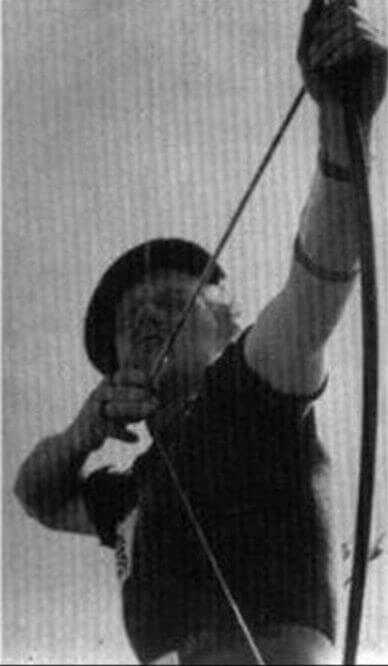
With his time in military service finally at an end, Jack Churchill had to reinvent himself. This is a common refrain for retired soldiers who leave the military still sufficiently physically intact to seek out further adventures. Churchill’s striking good looks and facility with a longbow captured the attention of Metro-Golden-Mayer filmmakers. Additionally, film star Robert Taylor had been an old rowing companion prior to becoming famous. Based upon these contacts, Churchill earned a part as an archer in the epic adventure movie Ivanhoe. He can be seen in the film firing arrows from the walls of Warwick Castle.
Here’s the point where most normal people would retire to the country to start banging out their memoirs. However, there was little normal about Mad Jack Churchill. Somewhere along the way, Churchill had been posted for a time as an instructor at the land-air warfare school in Australia. While there he had developed a passion for surfing. He found that he actually had a knack for it.
Jack Churchill became the world’s first surfer to ride a tidal bore. A tidal bore is a rare and somewhat unsettling phenomenon wherein an incoming tide creates a substantial wavefront that pushes up into freshwater rivers and estuaries. They are also typically quite noisy. During this first inaugural event, Churchill rode atop a five-foot bore wave for more than a mile on a 16-foot toothpick surfboard he designed and built himself. Freshwater surfing has since caught on in places as disparate as Brazil, China, the American Great Lakes, Munich, and Jackson Hole, Wyoming.
What a Stud
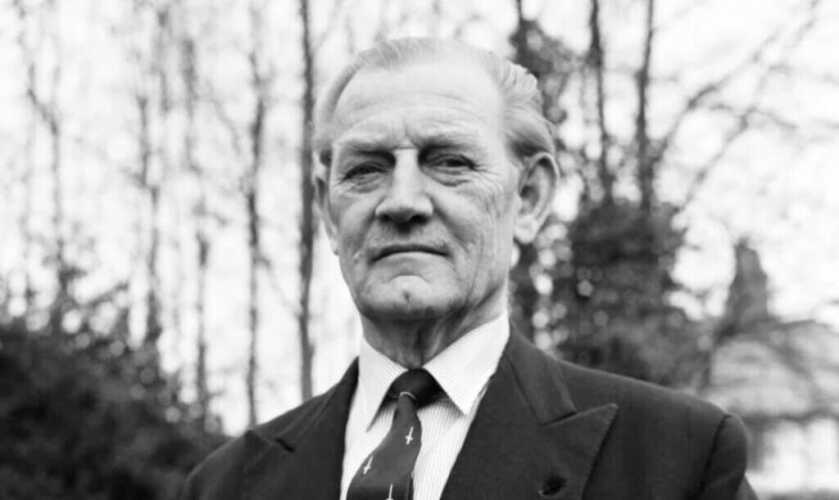
In his declining years, Jack Churchill entertained himself building radio-controlled model warships. He ultimately passed away in 1996 at age 89 in Surrey, England. From beginning to end, the unkillable British commando who did battle with the Wehrmacht behind a longbow and broadsword lived life on his own terms.
*** Buy and Sell on GunsAmerica! ***


Dr. Dabbs, Your column is my favorite and “go to” element of the GA emails. I’ve also passed your columns on to a Marine Corps Helo pilot friend, and he enjoys your work as much as I do. In the opening line to this one you say, “I wore the uniform, but I was a helicopter pilot.” That caught my attention as I wore the Army uniform and was also a helicopter pilot. I enlisted in 1966 right out of high school with enlistment options of “Infantry and Airborne.” When I asked the Recruiting NCO if he could guarantee me an option, he looked suspicious until I asked for those two. During in processing I passed the OCS test, barely, and was counseled by the BCT CO to apply. I did and got sent to Armor, where I learned the Army had flight school. On arrival in A Trp 1/9th Cav, 1st Cav, Viet Nam, I asked to be assigned to Scouts, “if they had any vacancies…” XO replied, “they always have vacancies.” On my first orientation flight with the Plt Ldr (who was so big we called him Lurch and who carried a really big Bowie knife), one of our scouts was shot down and Lurch put me out on the ground in the middle of the battle to help the Pilot and Observer of the downed OH-13. I grabbed an M-79 and off I crawled through the flooded rice paddy. Got the gunner loaded in my seat and he was flown to the medics, Pilot and I waited for another bird, then he left. I began to wonder if anyone really knew who I was and would come back–WO John Criag returned in his -13 and flew me back to the Troop. Years later in a CC class, the instructor asked us if we had ever defended ourselves with a firearm and if so, what type? My answer was “M-79 grenade launcher and M-60 MG, and they remain my preferred options. Don’t diminish yourself, none of us were “just a helicopter pilot.”
Hmm… Now that’s a Limey I would have relished standing shoulder to shoulder with, in the face of insurmountable odds. He still wouldn’t get me to drink warm beer, though!
Kinda surprised a man as battle-hungry as this didn’t tool up and deploy for the Korean War just a few years after the Israeli War of Independence.
I’ve had the opportunity to fire numerous WWII era fully automatic weapons over the years, including a BAR, Sten, Tommy, and a few others. But I’ll have to say, as far as fun to shoot my favorite was a toss up between the Tommy gun and the M2 version of the M1. I loved shooting that little M2!
The BAR was a handful and it’s hard to imagine that little squirt Bonnie Parkers’ gun of choice was sawed-off BAR!
Fresh water surfing in Munich and Jackson Hole?